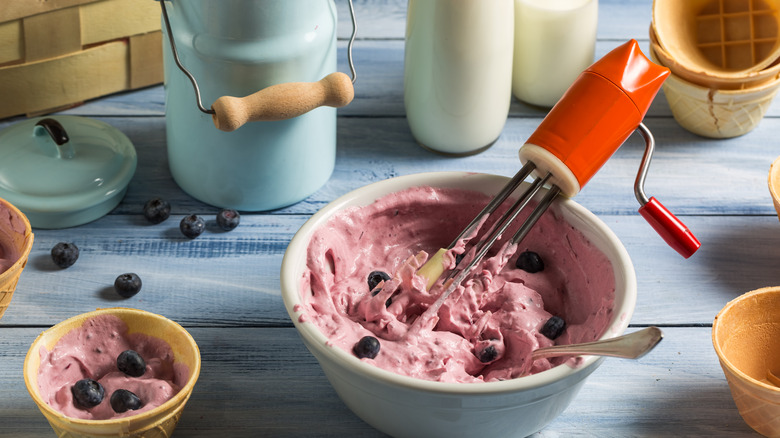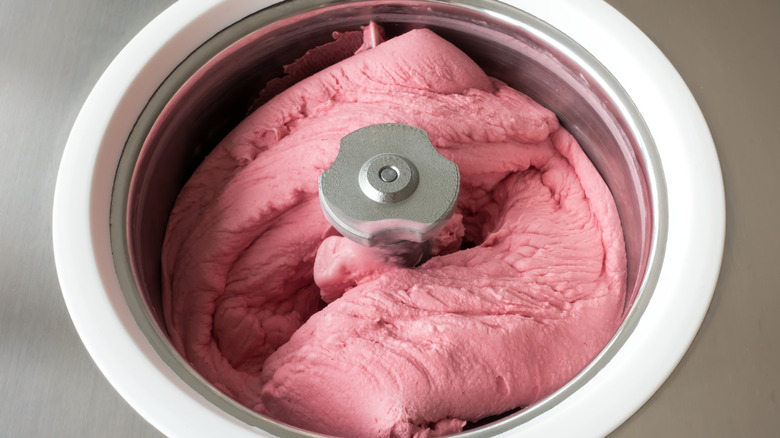What Happens If You Over-Churn Homemade Ice Cream
Homemade ice cream is a luxurious dessert for those willing to pull out the ice cream maker. As the machine diligently churns your cooked custard into a frozen treat, you can watch as tiny ice crystals form in the mix, making a cold, creamy, and scoop-able mixture. Still, many home cooks make a common mistake when concocting their own batch. The sad error? Over-churning the ice cream base.
This may seem like an impossible thing to do, as it appears that the consistency of ice cream doesn't change much after it reaches its initial stage of frozen crystallization, but you can over-churn your ice cream. Although you won't necessarily see it with the naked eye, the longer your ice cream churns, the more icy it becomes. This ruins the overall mouthfeel of the ice cream, making it more watery than creamy overall. So how should you go about avoiding this icy pitfall when churning your own ice cream?
More ice than ice cream
To properly time your ice cream churning, you should refer to your ice cream maker's instructions. Churning time varies from model to model, with as little as 15 minutes to 1 hour being required to get your ice cream to the soft serve texture. No matter how long it takes to get to this stage, you should always stop the machine after the ice cream reaches this thick stage. Any extra churning will just add more ice crystals at this point. With this in mind, set a timer so that you don't forget to check your ice cream maker — this isn't a set-it-and-forget-it situation.
If you're worried that a shorter churning time will lead to less set ice cream, don't be. Much of the set time for a homemade ice cream relies on the long rest in the freezer after the churning. As long as you make sure to properly chill your ice cream base overnight, you can expect it to have the typical thick consistency. Plus, we can promise it won't have an icy mouthfeel like an over-churned base would.

